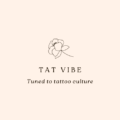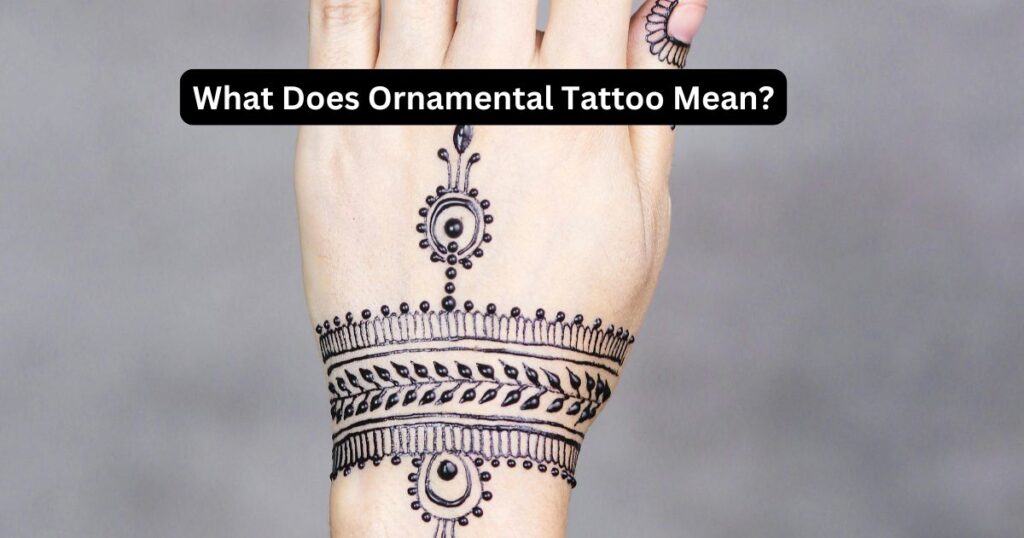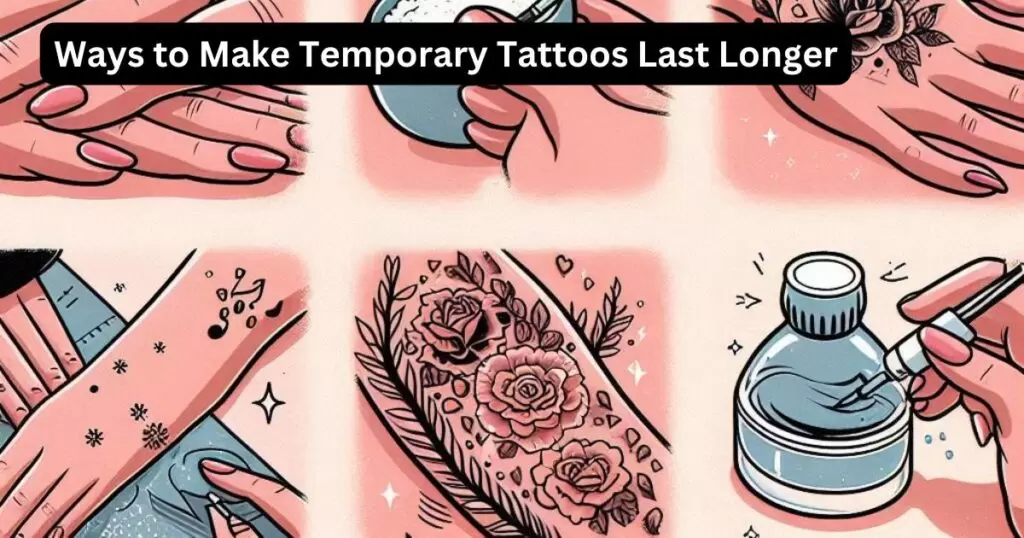Ornamental tattoos are decorative body art that focus on intricate patterns and aesthetic designs rather than specific images or symbols. They often draw inspiration from historical art styles, such as mandalas, geometric shapes, and floral patterns, and are valued for their beauty and symmetry.
While ornamental tattoos can serve as visual decoration, they can also carry personal meaning depending on the wearer’s preferences.
What is the Origin Ornamental Tattoo?
Ornamental tattooing has deep roots in ancient cultures. For centuries, people have adorned their bodies with tattoos to signify status, protection, or cultural identity. Many ornamental tattoos mimic motifs found in architecture, textiles, or jewelry.
Patterns from Indian henna designs, Islamic geometric art, or the flowing curves of Art Nouveau often inspire today’s ornamental tattoo designs. While the style is visually striking, it also has spiritual and symbolic undertones for many.
Common Ornamental Tattoo Designs
Ornamental tattoos often consist of repeating patterns, floral elements, and geometric shapes. They may be small and subtle, or large, flowing across a body part like a sleeve. One common feature is symmetry, which creates a sense of harmony and balance. The designs may include:
- Mandalas: Circular designs that symbolize unity and wholeness.
- Filigree: Delicate, lace-like patterns, often used to enhance the flow of other designs.
- Mehndi-inspired designs: Patterns resembling traditional henna tattoos, featuring floral and geometric motifs.
These elements are often combined into complex, flowing ornament tattoo designs that decorate the body. The meaning behind each design may vary, but often it reflects personal significance, cultural heritage, or a desire for aesthetic beauty.
The Popularity of Ornamental Tattoos
In recent years, ornamental tattoos have grown in popularity. Many people are drawn to the style because it is visually pleasing and versatile. Ornament tattoo designs can be adapted to suit any body part, from small wrist tattoos to full back pieces.
The decorative, non-specific nature of the designs allows for personalization. Some people choose ornamental tattoos purely for their beauty, while others may infuse personal meaning into the patterns.
Symbolism in Ornamental Tattoos
While ornamental tattoos are often valued for their aesthetic appeal, they can also hold deeper meanings. For example:
- Symmetry: Represents balance and harmony.
- Repetition: May symbolize infinity, continuity, or resilience.
- Floral patterns: Often represent growth, beauty, or the cycle of life.
The meaning of an ornamental tattoo is largely up to the wearer. Some may choose designs that resonate with their spiritual or personal beliefs, while others may simply appreciate the artistry.
Placement of Ornamental Tattoos
Ornamental tattoos can be placed almost anywhere on the body. The most popular placements include:
- Arms: Full or half-sleeves are common for large ornamental tattoo designs.
- Back: The wide surface allows for complex, detailed patterns.
- Chest: Symmetrical designs look especially striking when centered on the chest.
- Hands and feet: Smaller, delicate patterns work well in these areas.
The placement of an ornamental tattoo can enhance its visual impact. For example, a design that follows the natural curves of the body can create a more dynamic, flowing effect.
Choosing an Ornamental Tattoo
When choosing an ornamental tattoo, it’s important to consider the design’s size, style, and placement. Some questions to ask yourself before getting an ornamental tattoo include:
- Do you want a simple, small design, or something larger and more complex?
- Is there a specific cultural or symbolic meaning you want the tattoo to have?
- Do you prefer sharp geometric patterns or softer, more fluid designs?
Working with an experienced tattoo artist is essential for creating a high-quality ornamental tattoo. These designs often require precision and attention to detail, so it’s important to choose an artist with a strong understanding of the style.
Ornamental Tattoo FAQs
What is the Difference Between Tribal and Ornamental Tattoos?
Tribal tattoos and ornamental tattoos differ mainly in their origins and style. Tribal tattoos come from indigenous cultures and often carry cultural, spiritual, or symbolic meanings unique to the tribe. They typically feature bold, black lines and patterns, often depicting animals, nature, or ancestral connections.
On the other hand, ornamental tattoos are more focused on aesthetics and intricate design. They often include delicate, symmetrical patterns, such as mandalas, filigree, or geometric shapes, and draw inspiration from a variety of artistic traditions. While tribal tattoos are deeply tied to cultural identity, ornamental tattoos are more decorative and versatile, though they can still hold personal significance for the wearer.
Are Ornamental Tattoos Feminine?
No, ornamental tattoos are not inherently feminine. They are versatile designs that can suit anyone, regardless of gender. While some people associate the intricate, delicate patterns of ornamental tattoos with femininity, many ornamental designs are neutral or can be adapted to create a more masculine look.
For example, bold geometric patterns or symmetrical shapes may appeal to a wider audience, depending on individual preferences. Ultimately, whether an ornamental tattoo appears feminine or masculine depends on the design, placement, and personal style of the wearer.
What is an Ornamental Back Tattoo?
An ornamental back tattoo is a decorative tattoo design that covers part or all of the back. These tattoos often incorporate intricate patterns, symmetry, and flowing designs that follow the contours of the body. Because of the large surface area, the back is an ideal canvas for ornamental tattoos, allowing for complex and detailed designs.
Common themes for ornamental back tattoos include mandalas, lace-like filigree, or floral patterns, all of which can be customized to fit the wearer’s personal style and aesthetic preferences.
What is the Meaning of the Mandala Ornamental Tattoo?
The mandala ornamental tattoo symbolizes unity, balance, and harmony. The word “mandala” comes from the Sanskrit word for “circle,” and the design represents wholeness and interconnectedness.
In an ornamental tattoo, mandalas often feature intricate, repeating patterns arranged in a circular format, reflecting the idea of eternal balance and completeness. For many people, the mandala holds spiritual significance, symbolizing the journey toward self-discovery or inner peace. Its symmetrical design also highlights the idea of harmony in life.
A Summary
Ornamental tattoos are a popular style of body art, known for their intricate, decorative patterns. These designs can be purely aesthetic or hold personal or cultural significance, depending on the individual.
Whether it’s a mandala, filigree, or another pattern, ornamental tattoo designs are valued for their balance, beauty, and symbolism. When choosing an ornament tattoo, consider the size, style, and placement to create a design that resonates with you.



